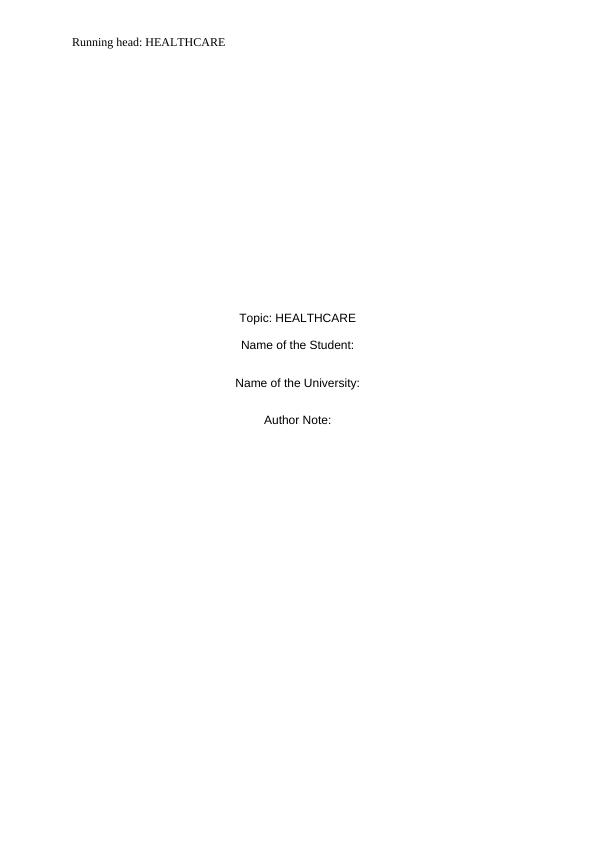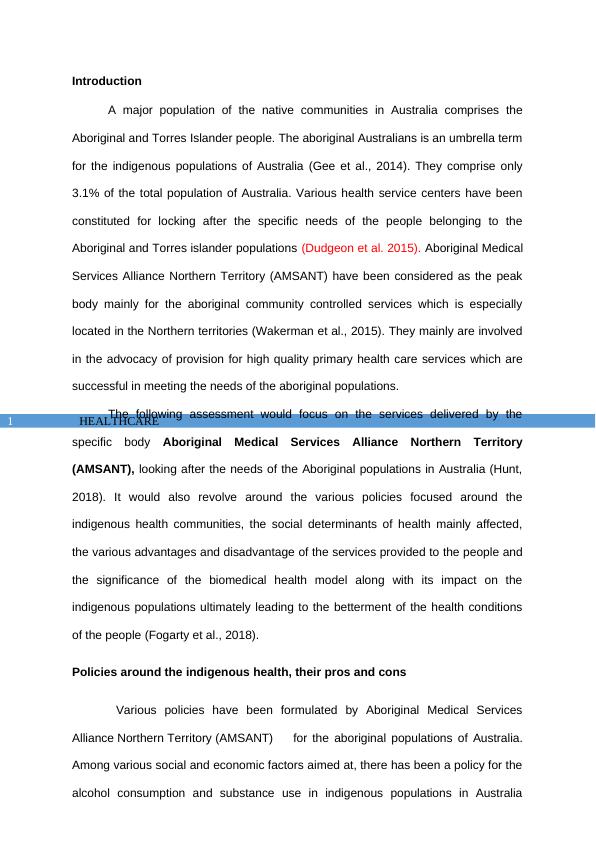Healthcare Services for Aboriginal Populations in Australia
Analyzing the profile and importance of an Indigenous Health service in contributing to the health and wellbeing of Indigenous Australians.
9 Pages2177 Words1 Views
Added on 2022-12-19
About This Document
This article discusses the healthcare services provided by Aboriginal Medical Services Alliance Northern Territory (AMSANT) for Aboriginal populations in Australia. It explores the policies, social determinants of health, and the significance of the biomedical health model in improving the health conditions of indigenous communities.
Healthcare Services for Aboriginal Populations in Australia
Analyzing the profile and importance of an Indigenous Health service in contributing to the health and wellbeing of Indigenous Australians.
Added on 2022-12-19
ShareRelated Documents
End of preview
Want to access all the pages? Upload your documents or become a member.
Alcohol Consumption among Aboriginals and Torres Strait Islanders
|1
|1792
|281
Violence among Indigenous Women in Australia
|14
|3838
|66
Comparing Groups: Aboriginal and Torres Strait Islander People and LGBT Community in Australia
|10
|2837
|448
Comparing group assignment PDF
|10
|2813
|110
Indigenous Health Perspective
|8
|2034
|70
First People Health Essay 2022
|9
|3052
|21



